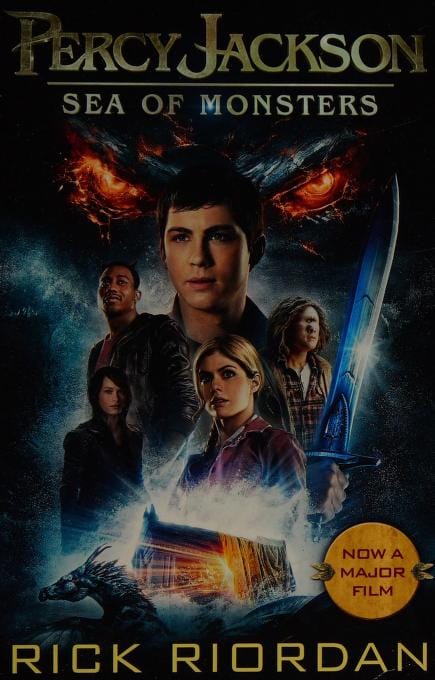Percy Jackson and the Sea of Monsters: Book Summary, Themes, and Review
Explore plot, themes, and impact of Rick Riordan's Percy Jackson and the Sea of Monsters in this concise, spoiler-light 800-word review and reading guide.

Introduction
Rick Riordan’s “Percy Jackson and the Sea of Monsters” is the exhilarating second installment in the best-selling Olympian series. Blending modern-day humor with ancient Greek mythology, the novel picks up a year after Percy’s first heroic quest in “The Lightning Thief.” This article delivers an 800-word, spoiler-light look at the book’s plot, key themes, character development, and cultural impact, helping new readers decide whether to dive in and giving long-time fans fresh insights.
Quick Plot Overview
Thirteen-year-old Percy Jackson returns to Camp Half-Blood expecting an ordinary summer—well, as ordinary as life gets for a demigod. Trouble arises when the magical borders that protect the camp are poisoned, endangering every half-blood on site. The only cure lies in the mythical Golden Fleece, hidden deep within the perilous Sea of Monsters, a modernized Bermuda Triangle full of sirens, cyclopes, and treacherous whirlpools.
When Percy’s best friend Grover the satyr is captured by a cyclops named Polyphemus, the rescue mission and the quest to save Camp Half-Blood become one and the same. Joined by Annabeth Chase, newcomer Tyson, and a colorful supporting cast, Percy sets sail aboard the bewitching Princess Andromeda, battles supernatural threats, and learns startling truths about his destiny and family lineage.
Main Characters and Development
Percy Jackson
Percy grows from impulsive hero to strategic leader, balancing typical teen struggles with the heavy burden of a prophecy. His internal conflict over loyalty and identity drives much of the emotional weight in the story.
Annabeth Chase
Brains of the operation, Annabeth confronts her own fears about family and failure. Her vulnerability surfaces during crucial scenes, revealing layers beneath her confident exterior.
Grover Underwood
Grover’s capture allows readers to see his bravery under pressure. His empathy, an under-appreciated superpower, becomes a key factor in confronting Polyphemus.
Tyson
Introduced as a homeless kid Percy protects at school, Tyson is later revealed to be a young cyclops and Percy’s half-brother. His gentle nature challenges stereotypes about monsters and broadens the theme of found family.
Key Themes
Loyalty and Friendship
The novel underscores that true strength comes from solidarity. Whether it’s Annabeth trusting Tyson or Percy risking suspension to defend a friend, Riordan illustrates how unwavering loyalty triumphs over fear and prejudice.
Identity and Belonging
Percy continues to navigate his dual existence as both mortal and divine. Tyson’s struggle for acceptance among the campers mirrors real-world issues of inclusion, making the fantasy resonate with younger readers learning to embrace their unique traits.
Courage Against Odds
From venturing into the Sea of Monsters to confronting the villainous Luke Castellan, characters repeatedly choose courage over comfort. Riordan uses mythical trials as metaphors for adolescent challenges such as standing up to bullies or overcoming self-doubt.
Mythological Easter Eggs
Riordan sprinkles the narrative with clever nods to Homer’s “Odyssey” and other classical tales. The Laistrygonian giants transform a middle-school dodgeball game into a life-and-death brawl, while the sorceress Circe turns Percy into a guinea pig instead of Odysseus’s men. These reimagined myths keep the pacing brisk and add educational value without feeling like homework.
Writing Style and Pacing
Riordan’s signature first-person, conversational narration makes Percy’s voice instantly relatable. The prose is crisp, sprinkled with pop-culture references that bring levity amid tense battles. Chapters end on cliff-hangers, encouraging page-turning marathons and making the novel ideal for reluctant readers.
Impact on Young Adult Literature
The success of “The Sea of Monsters,” following the explosive reception of “The Lightning Thief,” solidified the Percy Jackson series as a gateway to mythology for modern audiences. The book’s inclusive cast and humorous tone influenced subsequent YA titles like “The School for Good and Evil” and “Magnus Chase,” fostering a trend where ancient lore meets contemporary teen issues.
Film Adaptation: Hit or Miss?
While 2013’s movie adaptation introduced Percy’s world to a broader audience, many fans felt it diverged too far from the source material’s charm and character arcs. If you watched the film but skipped the book, give Riordan’s version a chance—the depth of themes and witty dialogue are incomparable.
Who Should Read This Book?
"Percy Jackson and the Sea of Monsters" is perfect for middle-grade and YA readers craving fast-paced adventure, as well as adults seeking nostalgic, feel-good escapism. Teachers can use the text to spark interest in classical studies, and parents will appreciate its positive messages about friendship and bravery.
Reading Tips
1. Refresh your memory of book one; callbacks are plentiful.
2. Keep a Greek myth cheat sheet handy to enrich the experience.
3. Discuss chapters in a book club to unpack themes like prejudice and heroism.
Conclusion
“Percy Jackson and the Sea of Monsters” skillfully balances heart-pounding quests with heartfelt lessons about loyalty, identity, and acceptance. Whether you’re a newcomer or returning demigod, the book promises a voyage worth taking, reaffirming why Percy Jackson remains a cornerstone of modern fantasy literature.



